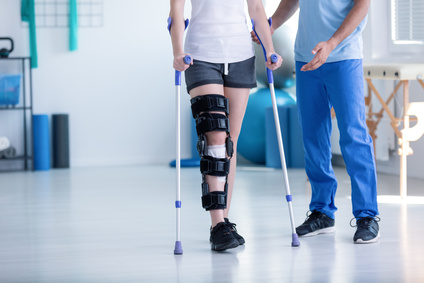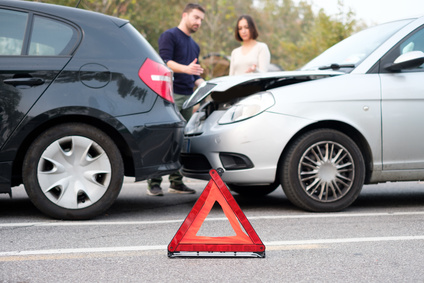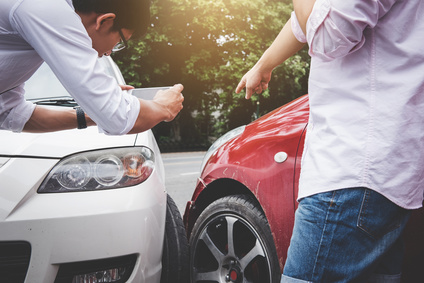According to the National Highway Traffic Safety Authority, In 2018 there were 6.7 million traffic accidents in the United States. Of those accidents, 33,000 resulted in fatality. These numbers are staggering and highlight the importance of being a safe driver.
However, even the safest drivers in the world are only able to control their own driving and a crash is unavoidable. The best way to lessen the pain of an accident is to be prepared before it even happens. If you know what steps to take you can help to ensure that your bills are covered and you will be able to focus on recovering.
Damages that can be sustained in a car accident include:
In the aftermath of a car accident, you will be faced with bills to pay for any medical treatment that you received as a result of the accident as well as damage to your vehicle. Depending on the severity of the accident you may find yourself unable to work. Without your normal income, the bills that you are facing may seem daunting. Some of the financial implications of are car accident are listed below:
Medical Expenses
Medical Expenses can add up quickly. As part of your medical expenses you should include bills that you have already paid, and any bills that you will pay in the future. This will also include any co-pays, diagnostics like X-rays, and transportation to the hospital.
Property damage
The largest property damage will most likely be to your vehicle. You are able to recoup up to the amount of the repairs necessary to get your car up to pre-accident condition. If your car is totaled, the amount will be equivalent to the value of your car before the accident.
Lost Wages
If the accident is severe and you are unable to return to work, you are can make a claim for both past and future lost wages.
The loss of future wages can play a massive part in a personal injury case. For example if an injury is catastrophic and the claimant will never be able to perform the same work, they may be eligible for years of future salary as a part of their claim. Sometimes, this can push rewards into the millions.
Pain and Suffering
An accident is not a pleasant experience and therefore it is possible to be compensated for the pain and mental anguish that you have dealt with. Pain and suffering are difficult to quantify, but that is where your attorney comes in. Pain and suffering include, but is not limited to: emotional suffering, inconvenience, loss of enjoyment of life, any adjustments you need to make to your lifestyle.

Insurance and the Legal Process
You might be wondering who is going to pay for all of the damages included in your accident. There are a couple of variables that determine who will be paying for the damages. There are three different types of insurance you can have depending on the state that you live in (State):
No Fault Insurance – In these states, if the damages are relatively small, your own insurance will cover the damages. This is known as the Personal Injury Protection (PIP) segment of your coverage.
At Fault – The party that was at fault will be held liable and the damages will likely be covered through their insurance policy.
Contributory Negligence – it is possible that multiple people are at fault for the accident. If this is the case, if the injured party is found even 1% responsible for the accident, then neither party will be able to recoup damages from the other. Any expenses will be paid out of the individual’s own insurance policies.
Comparative Negligence - the most common rule of law and is practiced almost all states. There are two types of comparative negligence
- Pure Comparative Fault – The injured party can recoup damages even if they are found to be mostly at fault. For example if the claim is for $10,000 and the injured party is found 70% at fault, they will only be able to receive $3,000.
- Modified Comparative Fault – This is the more common model that about 2/3rd of states use. Essentially the line is set at either 50% or 51% fault, depending on the state, and if that line is met or exceeded, the party will not be able to collect any damages.
Another variable that might affect the damages is the total amount of the damages. Insurance policies have a maximum, which means that there is a chance that the damages exceed the amount that is covered by one party’s insurance. If that is the case, there is generally an under insured motorist policy that will kick in. You can learn more about what to do if you are in an accident with an underinsured motorist here.
Steps to take at the scene of the accident
Ensuring that you are able to recoup damages for your car accident starts before the accident even happens. Knowing what to do immediately following the accident will make it easier to prove your claim and allow you to focus on recovering. If you are physically able to, here are the steps that you should take after a car accident:
1. Stay Calm
Car accidents are traumatic and staying calm isn’t always easy, but it is important to have a level head as you complete the rest of the checklist. Keeping a level head is also important when you are dealing with other people. Avoiding confrontation is important even if you believe that another drivers mistake has caused the accident.
2. Stop and Maintain the Scene
Do not leave the scene of the accident even if the damage seems minor. You would hate to find out later on that the damage was significant and be stuck paying for it on your own.
If you are able to, tend to any injured parties and make sure that you prevent further escalation of the accident by moving to safety. Make sure that you are visible to any other cars traveling on the road. This can be done with road flares or reflective cones around the scene of the crash.

3. Be Careful of What You Say
Never admit fault after a car accident, even if you feel that you contributed. Saying “I’m sorry” or trying to explain what happened can be used against you in court. Try to keep discussion of the accident to a minimum unless you are helping the police fill out their report.
4. Contact the police
The police are trained in handling the scene of a car accident. They will help maintain order so the accident is cleared away efficiently. If the damage is significant, the police will file a report with their analysis of what happened. In this report will be a description of the scene as well as witness statements that they may take. Be sure to obtain a copy of this report, as it will help your attorney prove your case. It is also a good idea to get the business card of the office so they can be tracked down later if needed.
5. Exchange information
Exchanging information at the scene with all parties (including witnesses) involved will help streamline the process. Here are the key details to gather:
- Name, address, license
- Email, phone
- Car make/model
- Insurance/Insurance policy #
6. Begin Gathering Evidence
There is no better time to gather evidence than immediately following the accident. If you have the ability to, begin by taking photos of the damage. These photos should include:
- Damages to your vehicle
- Damages to their vehicle
- Injuries sustained in the accident
- The location and position of the vehicles involved
- The road conditions at the time of the accident
This is also the time that you should note any impairment that the other driver might have had. Here are some examples of impairments that might have affected the other driver:
Alcohol – This is not something that you should try to prove on your own. If you do suspect alcohol, you can alert the police of your suspicion and they will look into it further. Do not try to gather this evidence on your own.
No Headlights – If the other driver was driving without headlights or with broken headlights, their vision was impaired. This should be noted as you recall the accident, as it could have been a contributing factor.
Broken mirror – having a broken mirror means the other driver was not as safe as they could be.
Other Visual Impairments – Depending on where you live, frost or snow on the car can severely limit the other driver’s lines of sight. If this is the case, make sure to document that with photographs as you are collecting evidence.

7. Consult an Attorney
This might be the most important step after a car accident. You should always speak with an attorney. Studies show that having an attorney will dramatically increase your chances of success. There are many benefits to having an attorney and having experience on your side is important in a personal injury claim. An attorney will be able to help you maximize your award by determining what you can claim as damages, gathering evidence to prove that you sustained those damages and presenting your claim to the insurance companies.
Insurance companies have plenty of experience dealing with claimants, which is why you should level the playing field by working with an attorney that has experience communicating with insurance companies.
A car accident is often a financial burden however most personal injury attorneys will work on a contingency basis. This means that there is no money to be paid up front and the attorney will only be paid once you win.
What's Next
If you are able to successfully complete these steps you will be in a good place to begin the claims process with your attorney. For more information on insurance, finding an attorney, or what to expect from a car crash settlement, check out the following articles: